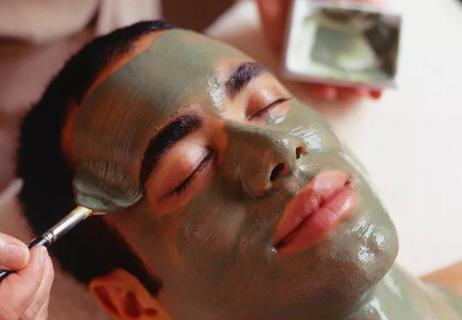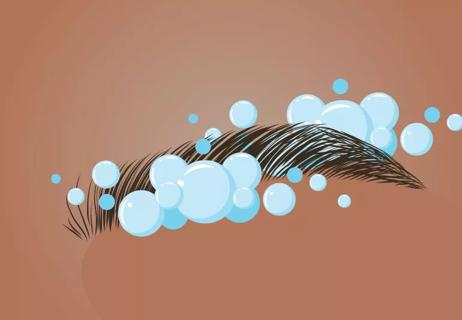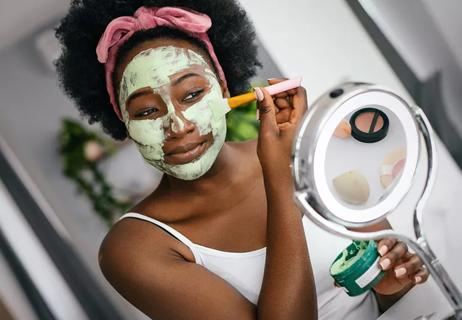Focus on the philosophy — replenishing and respecting your skin — not necessarily the steps

Do you want skin that shines like SHINee?
Advertisement
Cleveland Clinic is a non-profit academic medical center. Advertising on our site helps support our mission. We do not endorse non-Cleveland Clinic products or services. Policy
If you’re not sure what that means, there’s a good chance you’ve managed to keep your head above water as hallyu, “The Korean Wave,” has broken across the English-speaking world. Kpop, Kdramas, “Hallyuwood” and Kbeauty are increasingly ubiquitous — and it’s sending enrollment in Korean language classes through the roof across the U.S.
For dermatologist Alok Vij, MD, the arrival of Korean skin care is particularly welcome. We asked him to explain what distinguishes Korean skin care from its Western counterparts, what makes it so great and how to integrate Korean skin care products into your daily routine.
People of a certain age remember a time when taking care of your skin wasn’t just a chore: It was often downright painful. Toners stung, abrasive exfoliants left our skin red and absolutely everything had an unavoidably strong scent. We knew our skin was “clean” when it was tight and dry. We avoided oils at all costs and — our greatest skin care sin of all — we turned to tanning beds for a not-so-healthy glow. It was a one-size-fits-all approach that didn’t work for the vast majority of us.
Today, Dr. Vij explains that Korean skin care products are helping us undo what he describes as the “years and years of damage” we’ve done to our skin. And as we undo that damage, we’re beginning to learn that taking care of our skin can be relaxing, luxurious and even fun. And the end result feels as good as it looks. Korean skin care is all about restoring (and respecting) your skin — not punishing it.
Advertisement
“These are elegant lotions and potions that feel good and rewarding to use,” he notes. “So, it builds a positive cycle of reinforcement.”
That’s not the only reason Korean skin care products and approaches are so popular. Here are a few others:
“There’s been an overall trend toward inclusive skin care and inclusive beauty,” Dr. Vij says, “and Korean skin care offers a lot of solutions to common problems in a way that we hadn’t thought of before.”
U.S. beauty products are often marketed toward people with fair skin — and the skin care issues that come along with it.
“Dermatologists know that people with fair skin often have a certain subset of complaints, and people with darker skin tend to have slightly different concerns,” Dr. Vij says. There are plenty of exceptions to every skin care rule, but dermatologists more frequently treat people with pale skin for conditions like redness, rosacea and aging, while people with skin of color are more focused on issues like hyperpigmentation and uneven complexion.
“The beauty of Korean skin care is that it really hits the sweet spot, where it has active ingredients that work for everything,” Dr. Vij shares. “The products offer anti-aging benefits, but they’re also hydrating and promote an even skin tone.”
Korean skin care products are addressing needs that the U.S. skin care market hasn’t. And it definitely doesn’t hurt that Kbeauty brands tend to be much more affordable than their U.S., British and French counterparts.
Korean skin care has popularized a lot of different ingredients (like ginseng and snail mucin) and preparations (like ampoules, serums and essences) that are new to Western audiences. They’re also putting new, innovative spins on old skin care standards — especially sunscreen. And U.S. skin care companies quite literally can’t compete.
“The FDA is notoriously slow when it comes to approving sunscreens,” Dr. Vij states. “In the U.S., we’re still living on products that have were approved 20 to 30 years ago. And we haven’t made a lot of progress in new approvals.”
While Asian countries are producing unscented, sting-free SPF++++ (yup, that’s a thing) sunscreens, U.S. manufacturers are stuck with the same old chemical sunscreens. And the longer they’re around, the more concerns they’re raising.
“There’s more and more data that these chemical sunscreens get absorbed into your bloodstream — and they stick around in your body for a long time,” Dr. Vij says. “And we don’t know if there are any real deleterious health effects that go along with it. Meanwhile, there are sunscreens in other countries that are much, much more effective for sun protection, potentially safer to use and are even better for the environment.”
Advertisement
One of the things that makes South Korean skin care products so enticing is the way regulations and competition within the industry impact their formulation. The products:
If you’re familiar with Korean skin care, you’ve probably heard of the “10-step” routine. It usually looks something like this:
Ten steps are a lot. A lot of time, a lot of money and a lot of new products to put on your face. That’s why Dr. Vij doesn’t recommend a 10-step routine to his patients.
“If you give someone a 10-step routine, they’re probably going to do two or three of those steps reliably,” he concedes. “And if you start adding a bunch of different products to your routine at once, you won’t know what’s effective or harmful.”
Advertisement
The concept of the 10-step routine is brilliant from a marketing standpoint, but Dr. Vij prefers to focus less on steps and products and more on principles:
If you’re looking for a Korean skin care routine that’s cheaper and involves fewer steps, Dr. Vij suggests following this basic plan:
Advertisement
| Morning routine | Evening routine |
|---|---|
| Gentle cleanser | Gentle cleanser |
| Toner | Toner |
| Serum, essence or ampoule of choice | Serum, essence or ampoule of choice |
| Thin moisturizer | Thin moisturizer |
| Eye cream | Eye cream |
| Sunscreen | Thicker moisturizer |
| Morning routine | |
| Gentle cleanser | |
| Evening routine | |
| Gentle cleanser | |
| Toner | |
| Evening routine | |
| Toner | |
| Serum, essence or ampoule of choice | |
| Evening routine | |
| Serum, essence or ampoule of choice | |
| Thin moisturizer | |
| Evening routine | |
| Thin moisturizer | |
| Eye cream | |
| Evening routine | |
| Eye cream | |
| Sunscreen | |
| Evening routine | |
| Thicker moisturizer |
If you have the interest, time and money for a 10-step skin care regimen, Dr. Vij recommends integrating products very slowly. Not only will this reduce the hit to your wallet, but it will also make it easier to see what products are proving worthwhile and — if you develop an allergy — what products your skin can and can’t tolerate.
“Anyone who has a history of sensitive or delicate skin needs to be careful about using new products — especially if it has a fragrance or preservatives in it,” he cautions. “The Korean skin care industry may have better technology than we have, but you can still have an allergic reaction or intolerance. That’s why slowly increasing the number of products you use and the steps in your skin care routine is always a great idea.”
The sheer size of the Korean skin care industry means that there’s probably a product (or 20) out there that will work wonders for your skin. But with all the innovative ingredients and preparations available, you need to be comfortable that your skin can handle the trial and error.
“Acne, rosacea, eczema — those are common skin conditions where you really need to pick and choose what you use carefully,” Dr. Vij advises. But because Korean skin care tends to be fairly gentle, he finds that people with these conditions usually do OK with these products. Still, hypersensitive skin can be hard to calm down once it flares up, so it’s important to patch test products on your inner arm before putting them on your face.
There are many reasons to be excited about Korean skin care. But getting into it takes time — learning about the brands, about the different ingredients and preparations available, testing products … it can be overwhelming. And it’s OK if that isn’t your priority. There’s more than one way to do right by your skin.
“Some people have this stereotypical view of Korean skin care leading to endless beauty,” Dr. Vij muses. But that’s not reality — it’s just great marketing.
At the end of the day, he says what makes Korean skin care special is its foundational principles: It’s all about keeping your skin hydrated, happy and protected from the sun — and starting as early as possible.
“That’s the key,” he says, “and you can do those things with any good skin care routine.”
Learn more about our editorial process.
Advertisement

Pantothenol is a powerful moisturizer and can help repair damaged skin and hair

This alternative to retinol may be easier on sensitive skin

Day creams should protect your skin, night creams should soothe and repair it

Pure cocoa butter can help keep your skin supple, with a subtly delicious scent

Lie back and relax as a skin specialist cleanses, exfoliates and hydrates your skin

The powerhouse oil fights fine lines and wrinkles, soothes sunburn and a whole lot more

From icing to taping, experts chime in on what’s worth trying and what’s better off skipping

Moisturizing, wound-healing, anti-aging: This botanic extract can do a whole lot for your skin

Type 2 diabetes isn’t inevitable with these dietary changes

Applying a hot or cold compress can help with pain